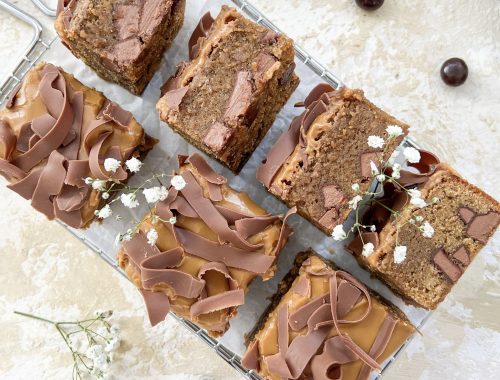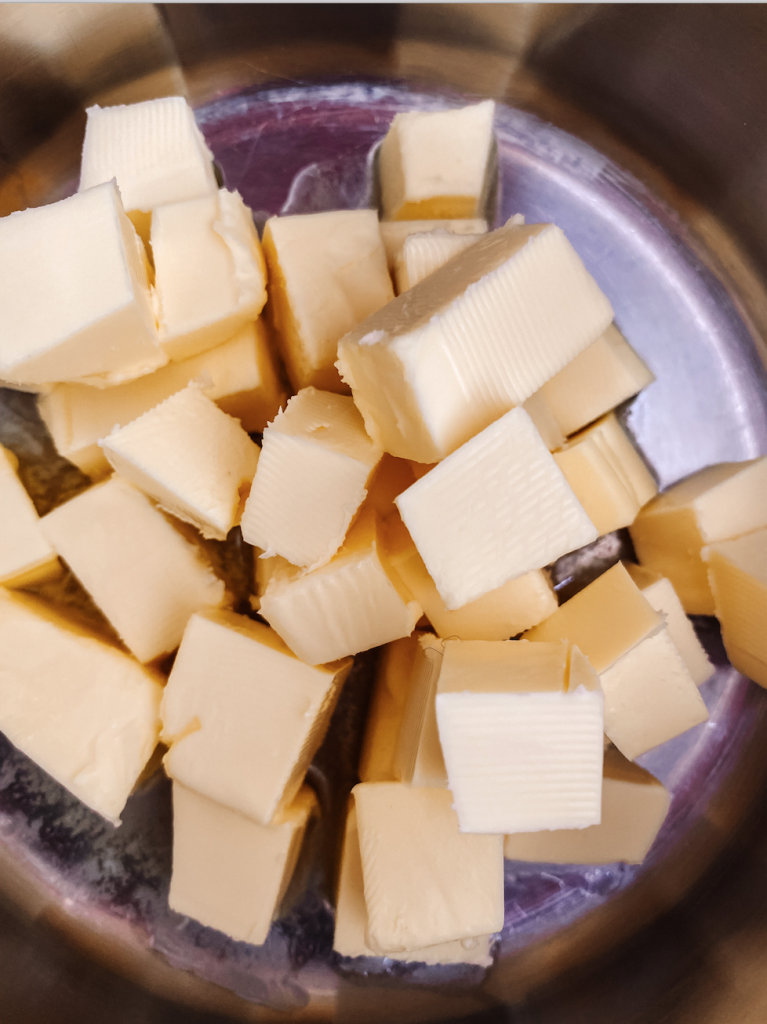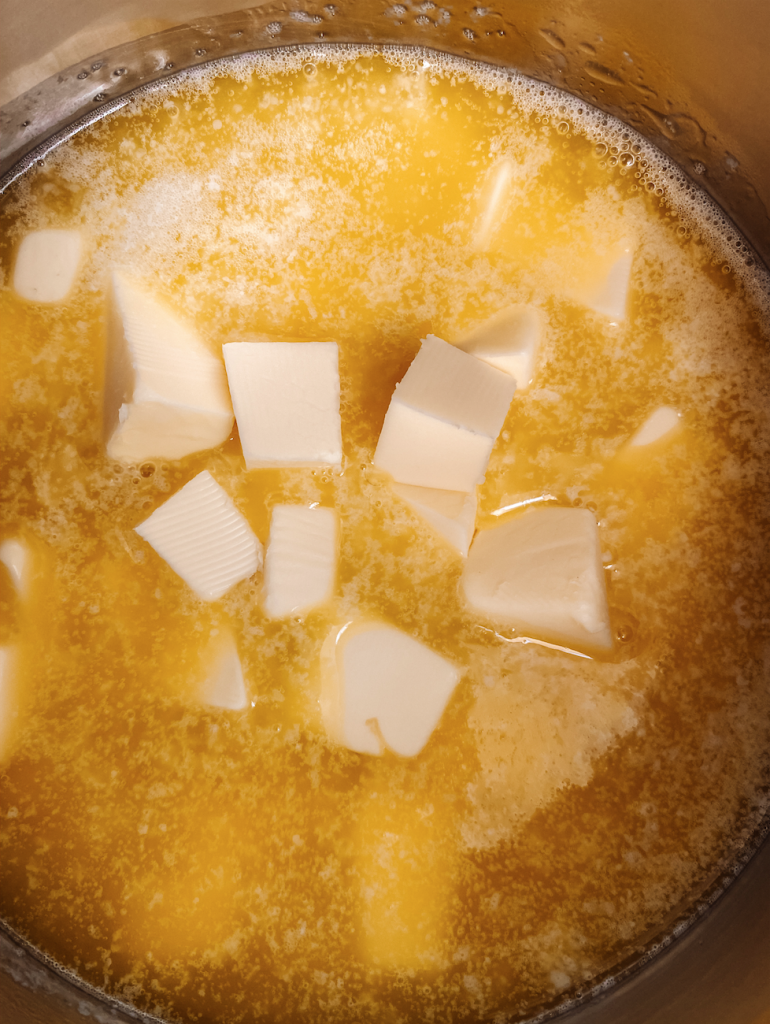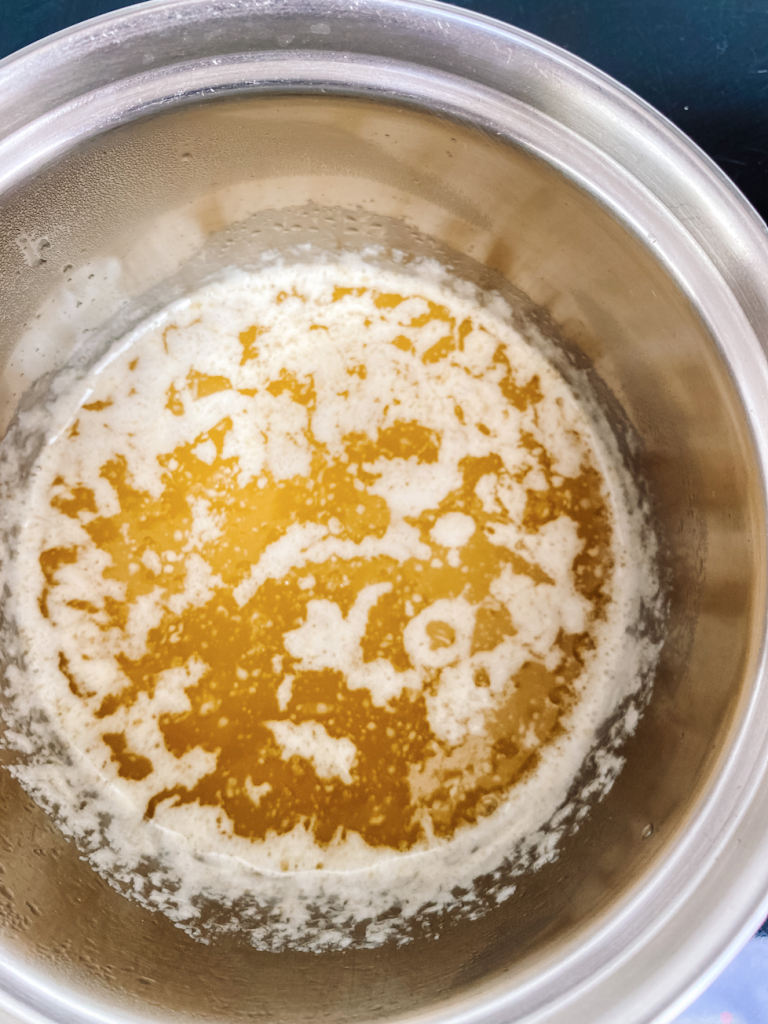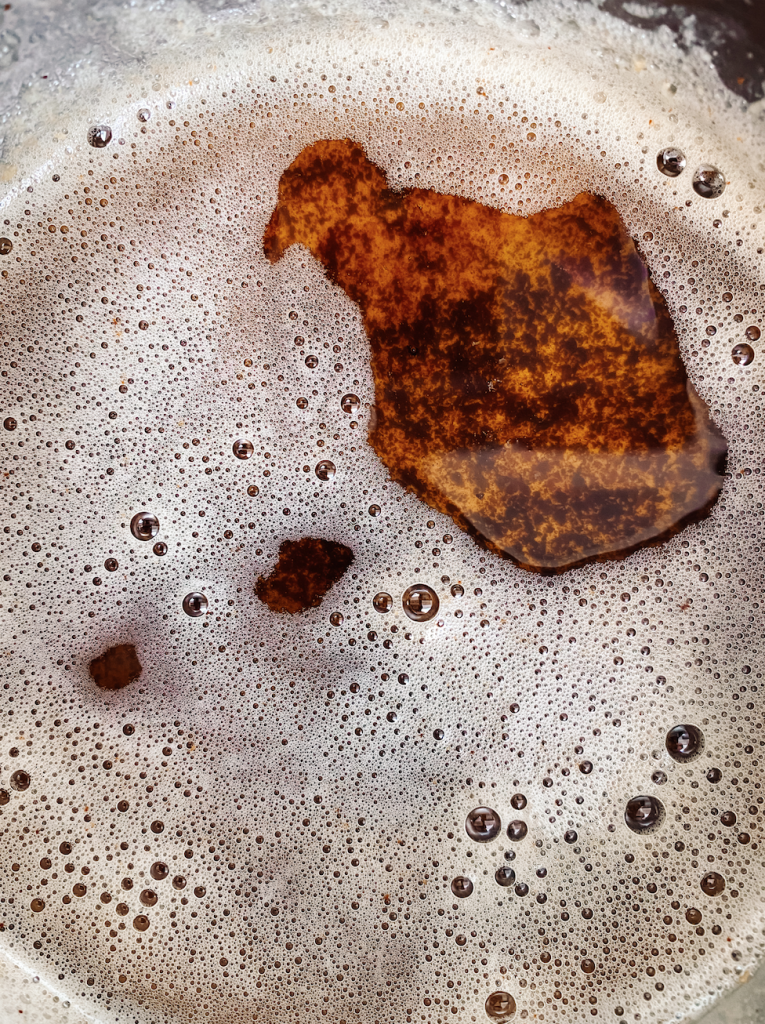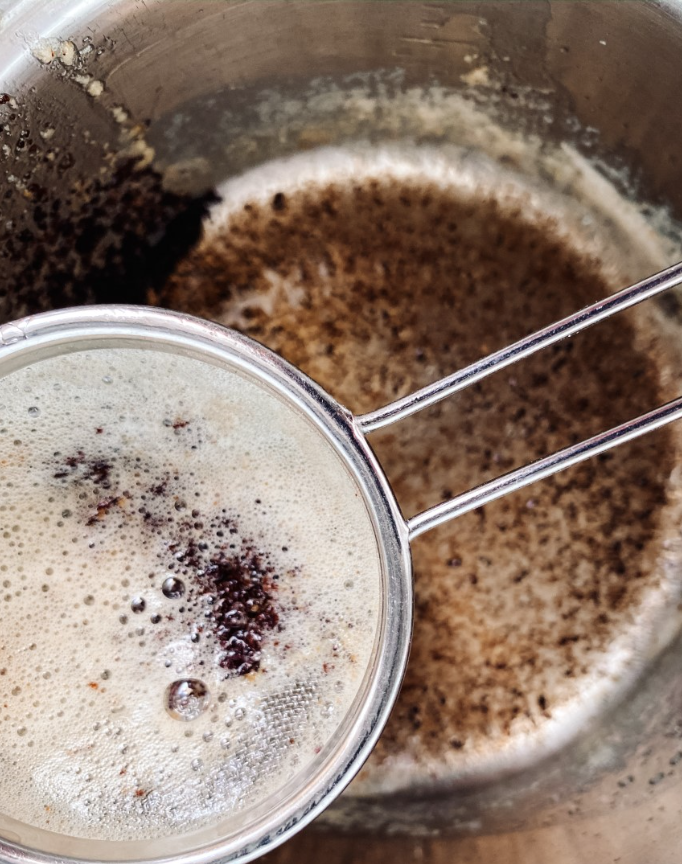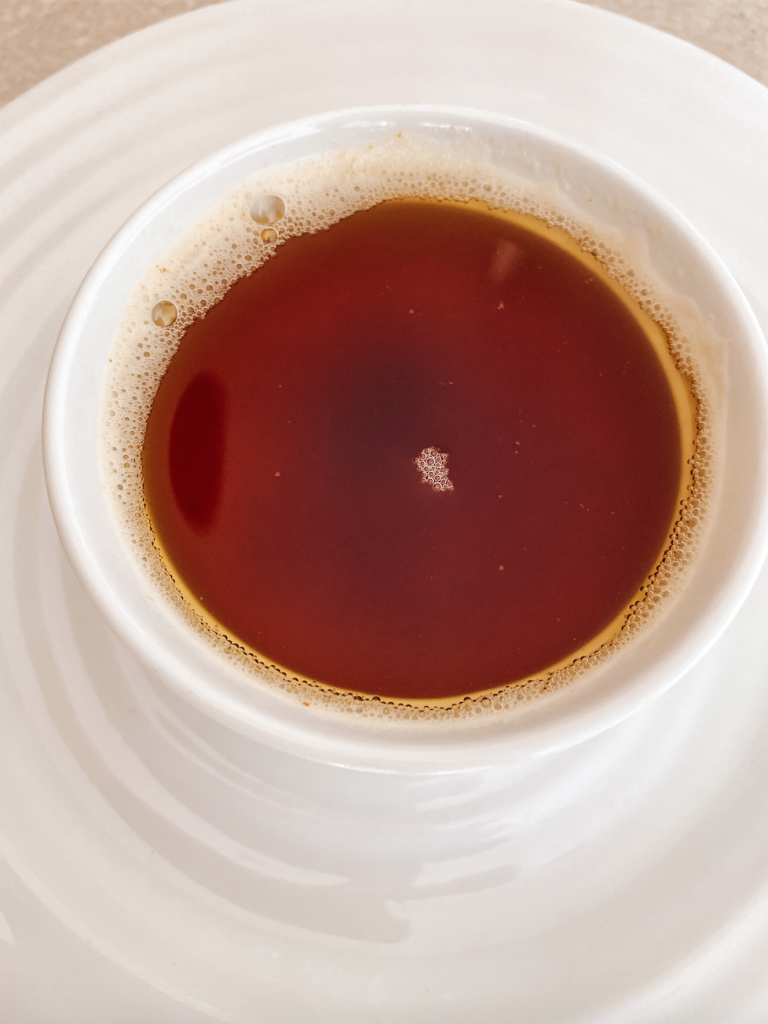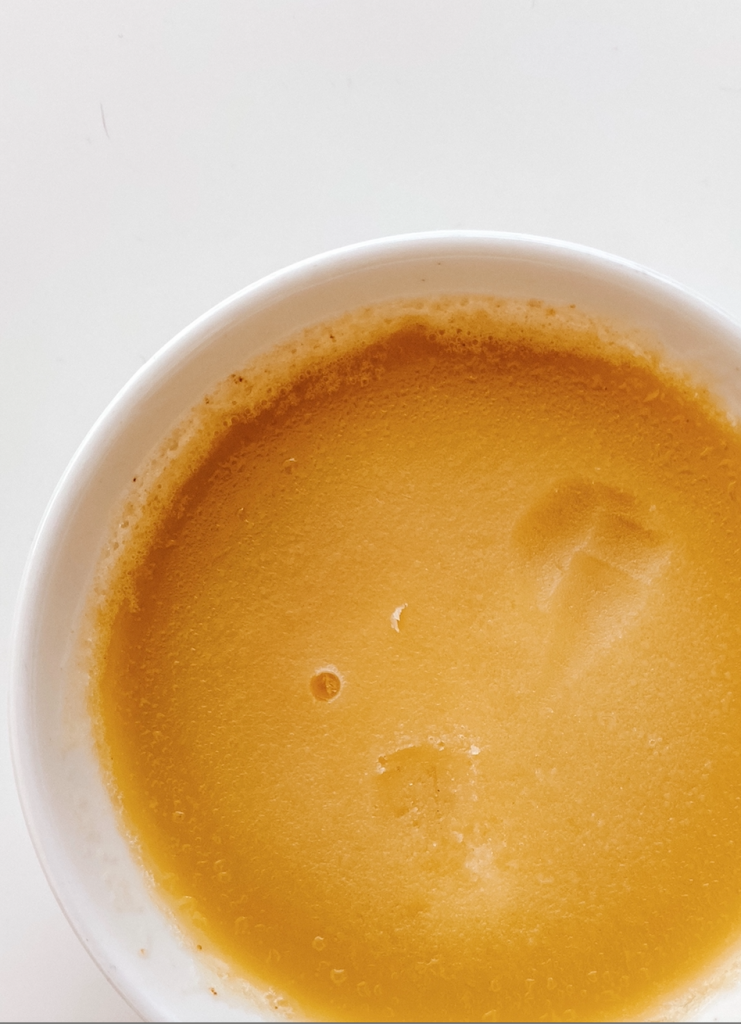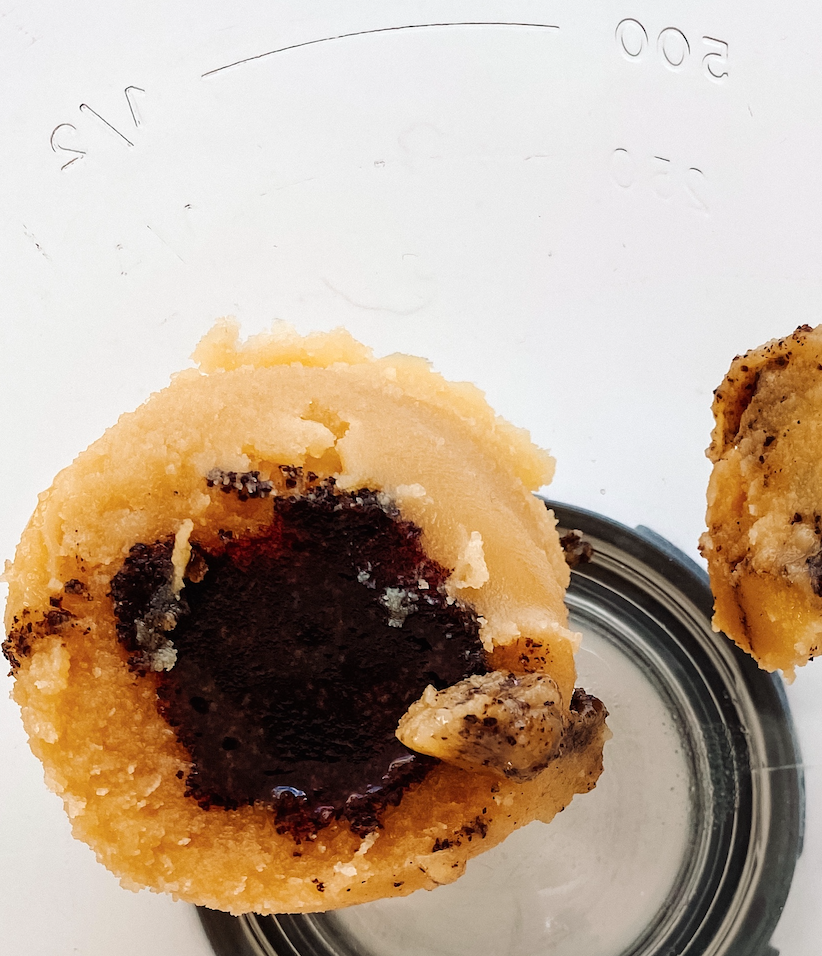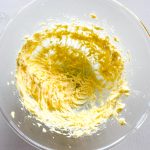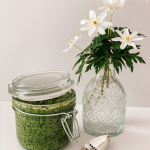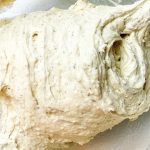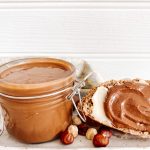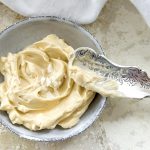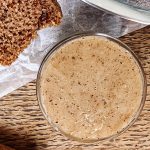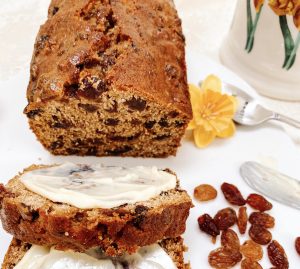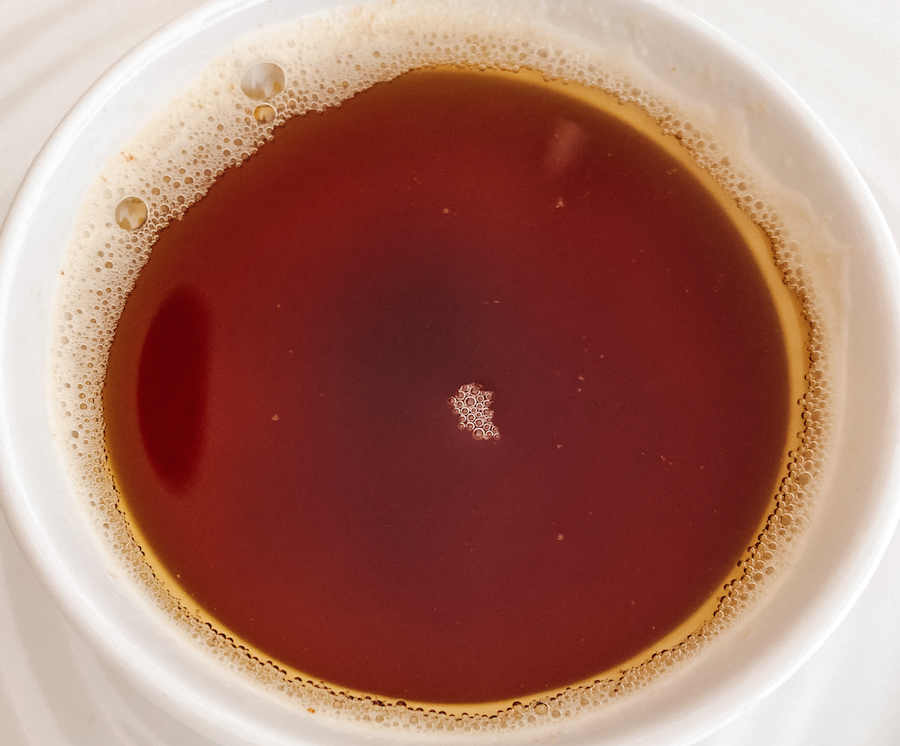
Brown Butter
Brown butter, also known as Beurre Noisette, is a simple, wonderful way of adding depth of flavour to both sweet and savoury food. It adds a rich, caramelised, nutty unami to your dishes.
You simply need to heat butter over a moderate heat until it browns. There are, however, a few points to remember:
- I prefer to use unsalted butter – you can always add salt later.
- Chop the butter into similar sized cubes – this ensures it all melts at the same rate and helps prevent burning should it melt unevenly.
- Put the butter in a cold pan and heat over a moderate temperature – do not heat the pan first and then add the butter, it may burn.
- It will foam first and then start to brown and become clear as the water evaporates off.
- Use a pale coloured pan, ideally white, so you can see the butter properly as it browns.
- Stir often to ensure it cooks and browns evenly.
- It is cooked when it reaches the colour you desire and you can smell a wonderful nutty aroma.
- It should only take a few minutes but this will depend on how much you are browning, the temperature you cook it at and the pan you use.
- As soon as it reaches the colour you desire, tip it straight away into a heatproof bowl or pan to prevent it cooking further.
- You can either just brown the quantity you need for your recipe or you can brown butter in batches to use when the mood takes you!
- Just like your normal butter, it stores well in the fridge for a few weeks and can also be frozen.
The browner the butter the deeper the flavour but don’t over brown or it can taste a little bitter and burnt. If using with delicate flavours you may want a pale brown, such as a brown butter on fish, but if using with other ingredients, such as in brown butter cookies, you may prefer a darker brown so the flavours don’t get lost amongst all the other ingredients. Either way, like many choices in cooking, it is down to your personal preference and how you like your food. Try it a few times and you will soon know.
The milk solids cook more quickly than the rest of the butter and some people choose to sieve the butter, when cooked, to remove them. I love the nutty little dark brown granules – they are like tiny little flavour bombs – and I normally leave them in. However I may choose to remove them if serving with delicate flavoured food or when appearance is key. If serving a beurre noisette with fish, I would sieve it, but I never do for cookies. Basically it is down to exactly how you plan to use it and as is often the case, personal preference.
Just like normal butter, you can use it as a liquid or you can put it in the fridge to solidify. When cold it can be whipped for adding into cakes, cookies and frostings. It is also wonderful served on warm bread, with meats and fish or on pasta. You can serve as is or whip it with normal butter and/or mixed with garlic and/or herbs. Do remember that if you want to whip it, you need to make your brown butter a couple hours before you want to use it, so there is time for it to solidify in the fridge.
WATER IN BUTTER AND REPLACING BUTTER WITH BROWN BUTTER
All butter contains water and when you make brown butter this water evaporates leaving you with a much purer fat. This means that although normal butter and browned butter can be interchangeable, the quantities you should use may vary. To complicate this, the amount of water varies depending on the butter and where it is made. To simplify, I work on the basis that normal European butter has roughly 15% water. So if I am replacing 100g normal butter in a recipe with brown butter, I would use 85g brown butter and add in 15ml of liquid such as milk, water, coffee etc. to replace the water which has evaporated.
So far so simple. However I got a real headache yesterday trying to work out other quantities which were not nice round numbers like 100g. Even worse when I was looking at replacing brown butter in a recipe with normal butter. So I asked my daughter Emma, who is currently home from medical school during COVID 19, for a bit of help. To her, this is ridiculously simple algebra! To me, just the word algebra and I wanted to cry. It took 4 pages of notes and an ever more frantic Emma, who was baffled not by the maths, but by the fact I just didn’t get it!
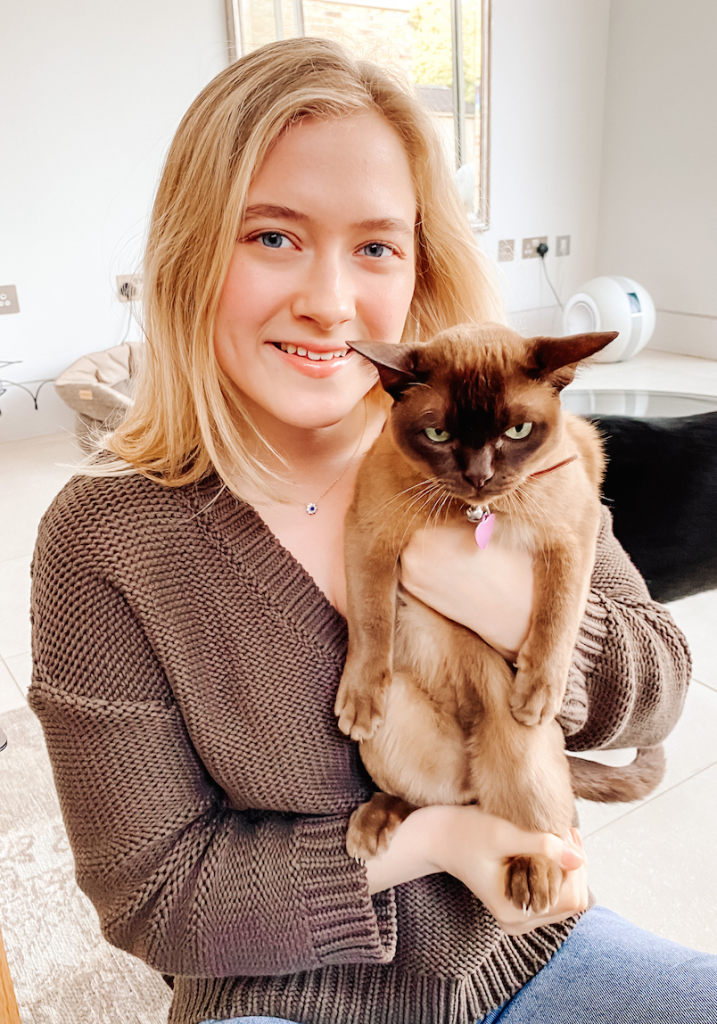
Emma to the rescue with a very grumpy Mimi looking like Yoda! 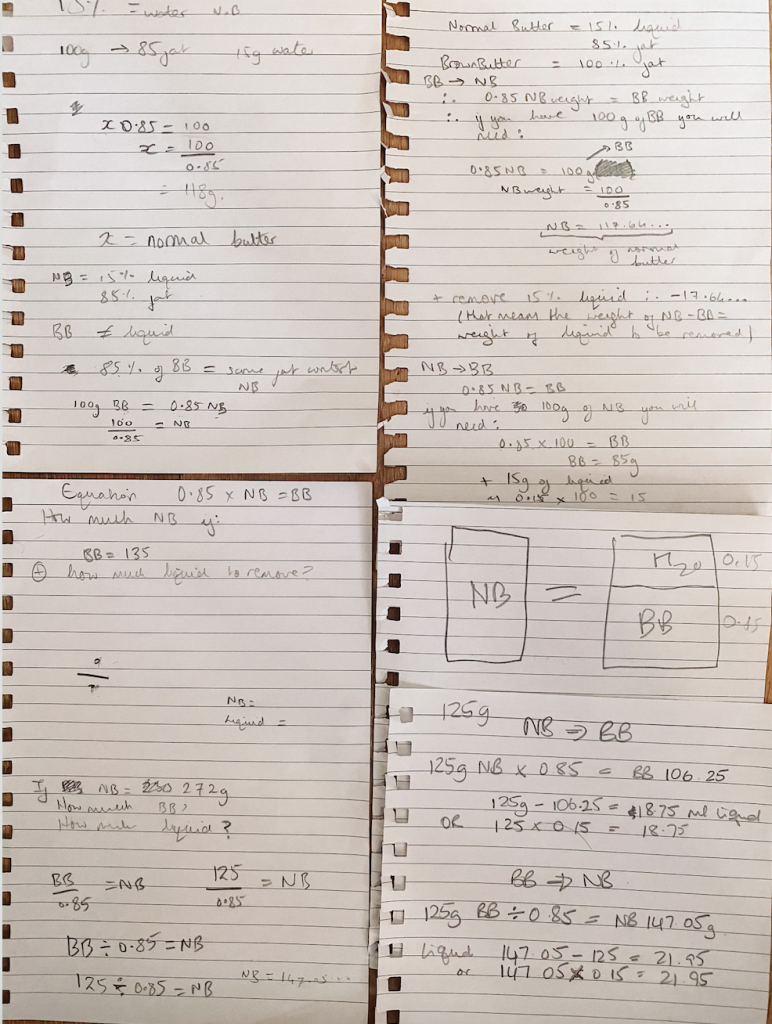
Can’t believe it took all this before I got my head around it! 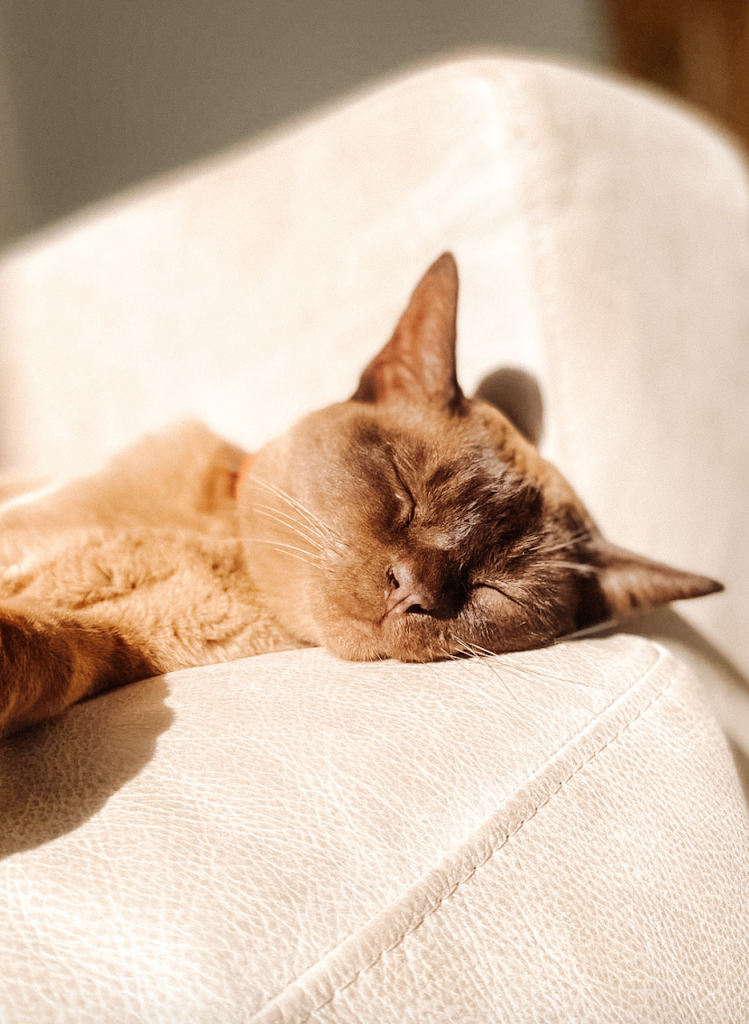
Mimi after 5 minutes of algebra!
However, I have got it now! Here goes:
Please note:
- NB = normal butter
- BB = brown butter
- X = quantity
- g = grams
- ml = millilitres
Replacing normal butter in a recipe with brown butter:
X g NB multiplied by 0.85 = BB.
X g NB multiplied by 0.15 = liquid to add
For example, if the recipe says 100g for normal butter but you want to use brown butter:
100g NB multiplied by 0.85 = 85g BB
100g NB multiplied by 0.15 = 15ml of liquid to add
Replacing brown butter in a recipe with normal butter: (and this is when I got a bit confused!)
X g BB divided by 0.85 = NB.
X g NB multiplied by 0.15 = liquid to reduce
For example, if the recipe says 100g for brown butter but you want to use normal butter:
100g BB divided by 0.85 = 117.64g NB (Round up to 118g)
118g NB multiplied by 0.15 = 17.7ml of liquid to reduce
Quick reference when replacing normal butter in a recipe with brown butter. I have rounded the numbers to make it easier.
| Normal Butter in the recipe | Brown Butter to use instead | Liquid to add into the recipe |
| 25g | 21g | 4ml |
| 50g | 42g | 8ml |
| 75g | 64g | 11ml |
| 100g | 85g | 15ml |
| 125g | 106g | 19ml |
| 150g | 128g | 22ml |
| 175g | 149g | 26ml |
| 200g | 170g | 30ml |
| 250g | 213g | 37g |
Quick reference when replacing brown butter in a recipe with normal butter. I have rounded the numbers to make it easier.
| Brown Butter in the recipe | Normal Butter to use instead | Liquid to reduce in the recipe |
| 25g | 29g | 4ml |
| 50g | 59g | 9ml |
| 75g | 88g | 13ml |
| 100g | 118g | 18ml |
| 125g | 147g | 22ml |
| 150g | 176g | 26ml |
| 175g | 206g | 31ml |
| 200g | 235g | 35ml |
| 250g | 294g | 44ml |
One final point – some butter packets specify how much water there is in the butter. If your butter has more or less than 15%, please use the equations to make the necessary adjustments.

You May Also Like
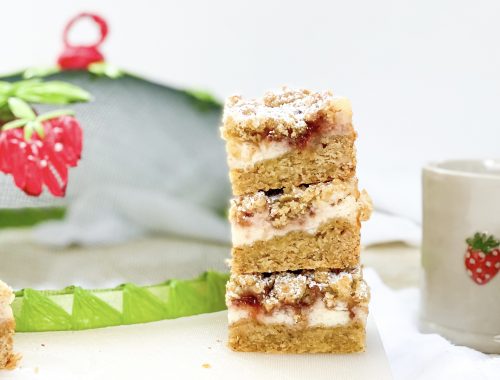
Strawberries and Cream Oat Crumble Cheesecake Slices
8th July 2021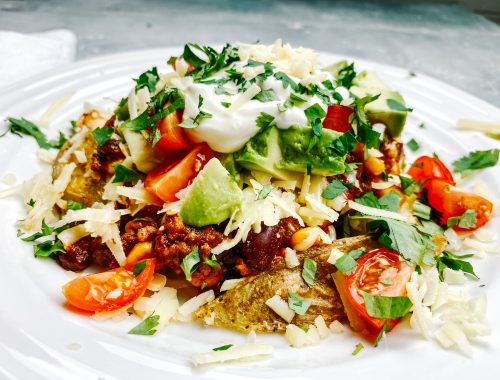
Dirty Chilli Fries
11th November 2020